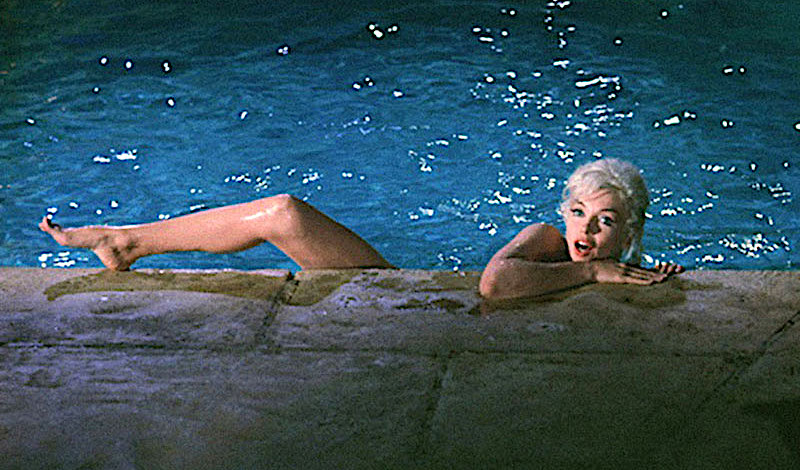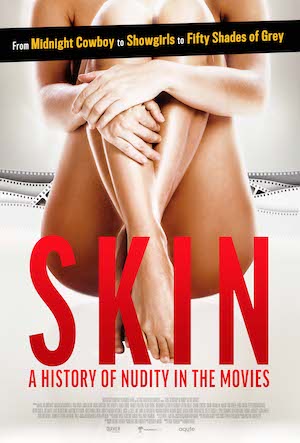
From the moment the first motion picture camera was invented, there has been nudity in the movies. Even in the earliest days of this new art form, filmmakers delighted in exploring the human body and audiences were riveted by scenes of nudity on the screen. This comprehensive and fascinating new documentary begins with the silent era and continues through the present day, looking at changes in morality and sensibilities while examining the political, sociological, and artistic changes that shaped this rich history.
Skin: A History of Nudity in the Movies also delves into the gender bias surrounding nudity in motion pictures. It looks at the surprisingly relaxed attitude towards nudity in pre-code Hollywood, the period of censorship that was designed to “clean up” the industry, and how the powerful MPAA ratings system was formed to help the industry police itself (and avoid outside intervention). The documentary also addresses the impact of the more recent #metoo movement on nude scenes in movies today. I spoke with Danny Wolf, the director of this fascinating doc, and Jim McBride, the co-executive producer who, as “Mr. Skin,” has run a website for the past 21 years that documents nudity in the movies.
Danny Miller: As far as I’m concerned, this is the perfect film for the pandemic — who wouldn’t be interested in this topic? Being a classic movie lover, I really enjoyed the material about the early days of the movies before censorship really took hold. I think this film might cause a wild increase in sales for Cecil B. DeMille’s The Sign of the Cross from 1932 starring Fredric March, Claudette Colbert, and Fredric March. Wow, who knew? I never dreamed there would be that much nudity in a DeMille film from a major studio!
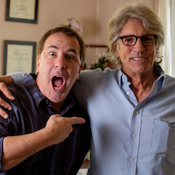
Danny Wolf: That was the best part about making this film — researching those movies from the twenties and thirties. I hadn’t seen most of them so I had a lot of catching up to do, from the earliest ones up through the infamous Caligula and beyond. I learned so much. I especially hadn’t realized the extent of nudity in the movies in those early days. I love all those pre-Code movies. I still haven’t been able to find the complete version of The Sign of the Cross but that’s on my list!
Jim, I know you’ve been following this topic for many years on your website. Did you have a big hand in the organization of the film into distinct eras?

Jim McBride: Yes, in my role as one of the executive producers, I definitely had some input. My website just had its 21stanniversary, I can’t believe I’ve been working in this field for that long, so I do have a pretty good background on the subject. Of course, what I do on my site and what this film is about are really two completely different things. The hardest thing was to narrow it down to a two-hour documentary. We had to decide on the pivotal moments in the history of nudity in the movies. It took a team approach, with me, our other Executive Producer, Paul Fishbein, and our director, Danny. We’re all film buffs and I hope that will come across to everyone who watches this documentary — we really love movies.

I think the film is very well organized and the mix of interview subjects is just fantastic. I loved seeing the range of people you talked to, from some who were mostly known for appearing nude in the movies to directors like Peter Bogdanovich, Amy Heckerling, Kevin Smith, and Martha Coolidge and stars like Malcolm McDowell, Pam Grier, Eric Roberts, and Sean Young, among others. To be honest, I was surprised to see some of them, like Mariel Hemingway, who’s such a delight in the film. I didn’t think she’d be that open to talking about this topic.
Danny Wolf: We were so happy to have her because she was in two important films that are discussed: Personal Best and Star 80, and of course, she had quite a different look in both films. She even talked about the whole issue that was so big at the time about whether she got breast augmentations just to play Dorothy Stratten in Star 80. Mariel and Eric Roberts both talk about that.
Another surprise was hearing from Ken Davitian about his experience in Borat.
We were very happy to have him discussing his crazy scene from that film. Nudity in movies was never limited to just women or to people with a certain body type.
Malcom McDowell must have been a blast to talk to. I could listen to his stories about moviemaking all day long.
That was the most fun interview you can ever do. He’s such a great storyteller and you just hang onto every word he says. I interviewed him about Clockwork Orange for another documentary I did but hearing his firsthand stories about Caligula was just great. There could be a whole documentary just on that one film, that’s how much lore there is about it!
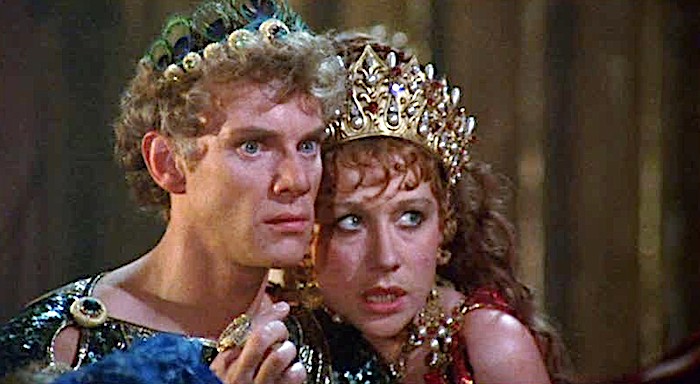
Honestly, there should be. I remember seeing that movie as a teenager and it was such a huge deal. Truly awful but you felt that underneath all of that gratuitous sex and nudity lurked a really good movie, especially with that cast. McDowell’s stories about John Gielgud on that set were hilarious but it also had Peter O’Toole and Helen Mirren — just crazy! It was interesting to learn in your film how Bob Guccione was responsible for turning that film into the sex-fest that it became.
Jim McBride: Yes, and there’s talk that Tinto Brass is helping with a re-edit that will show more of what the film was originally intended to be! I’m sure they’ll be getting rid of many of the lurid scenes that Guccione shot at two and three in the morning!

It was moving to see the late Sylvia Miles in her last on-camera interview, and I loved hearing from Mamie Van Doren. I always thought she was so comfortable with her sex kitten image, I was surprised to hear her talk about how reluctant she was to do nude scenes in movies.
Danny Wolf: Yeah, there were obviously certain people we had to cover in the film, and that included the trio of Marilyn Monroe, Jayne Mansfield, and Mamie Van Doren who, in some respects, went on to carry both Marilyn and Jayne’s torches. Marilyn had done a nude scene in Something’s Gotta Give in 1963, the movie that was never completed before her death, and Jayne had appeared nude in Promises! Promises! that same year which was a huge deal. The first mainstream star to appear in the nude in an American film! And then Mamie comes out in Three Nuts in a Search of a Bolt. Those movies just changed everything in terms of having stars willing to appear nude.
Jim McBride: We talk about the infamous Hays Code that was in full force by the mid-1930s. Before that, there were all these crazy movies with all sorts of nudity but that came crashing to and end when the Hays Code went into effect. That lasted for decades. But these movies with Monroe, Mansfield, and Van Doren finally killed that level of censorship in the 1960s once and for all. And kicked off the modern era of celebrity nudity.
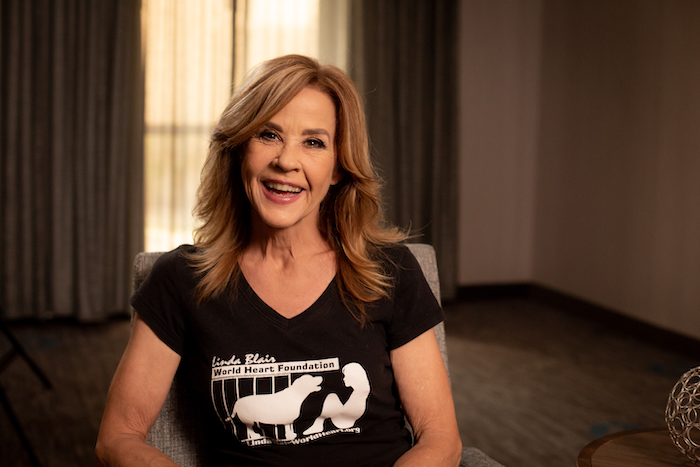
It’s also interesting to watch this film through the lens of the #metoo movement and our changing sensibilities. It’s hard not to cringe when hearing from some of the actresses who worked in the 70s and 80s who felt so pressured to do nude scenes even if they weren’t comfortable doing them and hadn’t agreed to. It was poignant hearing from Linda Blair in the documentary and how she was kind of ambushed into doing nudity in her career.
Danny Wolf: Yes, she definitely felt pressured to do things that she didn’t sign up for. And she was basically told she’d destroy the film if she didn’t do what they asked. There was a lot of stuff like that in the 70s and 80s. We talked to actresses who signed on for scripts in which there was no nudity and then suddenly word would come down on the set that they had to add a certain number of nude scenes. They almost always felt that they had to do it whether they liked it or not. If they refused, they were told that they were holding up production and hurting the distribution of the film. And many felt that if they didn’t agree, that would be the end of their career.
Awful. Thank God things have changed to a large extent, and probably a big part of that is having more women directors and women in other positions of power.
Absolutely.
And, speaking of “celebrity nudity,” now it seems so normal to see nudity on the biggest, most popular TV shows.
Jim McBride: Yes. Back when I launched my website in 1999, I think there were something like 25 TV shows that had any nudity at all. You know, a few scenes in Sex and the City and other shows of that type. When we looked at that last year, we found 144 television shows across many different platforms including Netflix, Hulu, and Amazon. I truly believe we’re in the golden age of nudity! It’s no longer a big deal when you’re watching a show or a movie on these networks. And that includes male nudity, too, which was certainly not the case in the 60s and 70s. I think we’re finally getting rid of that double standard.
Right. I remember the days when you could show women completely naked and still get an R rating but if anyone flashed a penis, God forbid, it was an automatic X rating.
That’s right. And that again goes back to the fact that in those days, most directors, producers, writers were men. And that has changed as well, thank goodness. Look at a show like Game of Thrones. Lots of female nudity, yes, but a huge amount of male nudity, too.
Well, there’s so much in this film that is food for thought about our changing world. And more people you talk to that we haven’t even discussed like Pam Grier — I would have been happy with two hours of just her talking about her memories of making movies!
Danny Wolf: Me, too, she is fantastic!
Skin: A History of Nudity in the Movies is currently available on demand.

